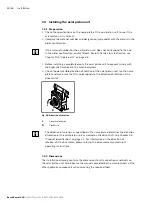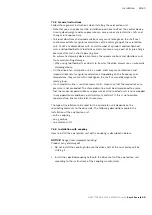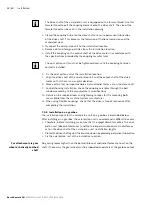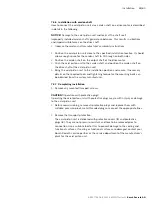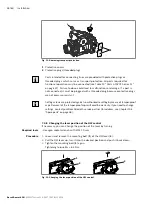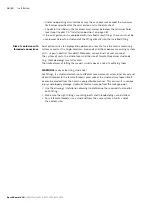
44/60 Commissioning
Bosch Rexroth AG
, A10VGT Series 11, RE 92770-01-B/11.2016
8.2 Running-in phase
NOTICE
Property damage by insufficient viscosity!
An increased hydraulic fluid temperature may reduce the viscosity values by too
much and damage the product.
▶
Monitor the operating temperature during the running-in phase, e.g., by
measuring the leakage temperature.
▶
Reduce the loading (pressure, rotational speed) of the axial piston unit if
impermissible operating temperatures and/or viscosities occur.
▶
Operating temperatures that are too high indicate faults that have to be
analyzed and cleared.
The bearings and sliding surfaces are subject to a running-in phase. The
increased friction at the start of the running-in phase results in increased heat
development which decreases with increasing operating hours. The volumetric
and mechanical-hydraulic efficiency increases as well through the conclusion of the
running-in phase of approx. 10 operating hours.
To ensure that contamination in the hydraulic system does not damage the axial piston
unit, Bosch Rexroth recommends the following procedure after the running-in phase:
▶
After the running-in phase, have a hydraulic fluid sample analyzed for the required
cleanliness level.
▶
Change the hydraulic fluid if the required cleanliness level is not reached.
If a laboratory test is not carried out after the running-in phase, it is recommended
to change the hydraulic fluid.
8.3 Recommissioning after a standstill
Depending on the installation conditions and ambient conditions, changes may occur
in the hydraulic system which make recommissioning necessary.
Among others, the following criteria may make recommissioning necessary:
•
Air and/or water in the hydraulic system
•
Old hydraulic fluid
•
Other contamination
▶
Before recommissioning, proceed as described in Chapter 8.1 “Initial
commissioning” on page 41.

